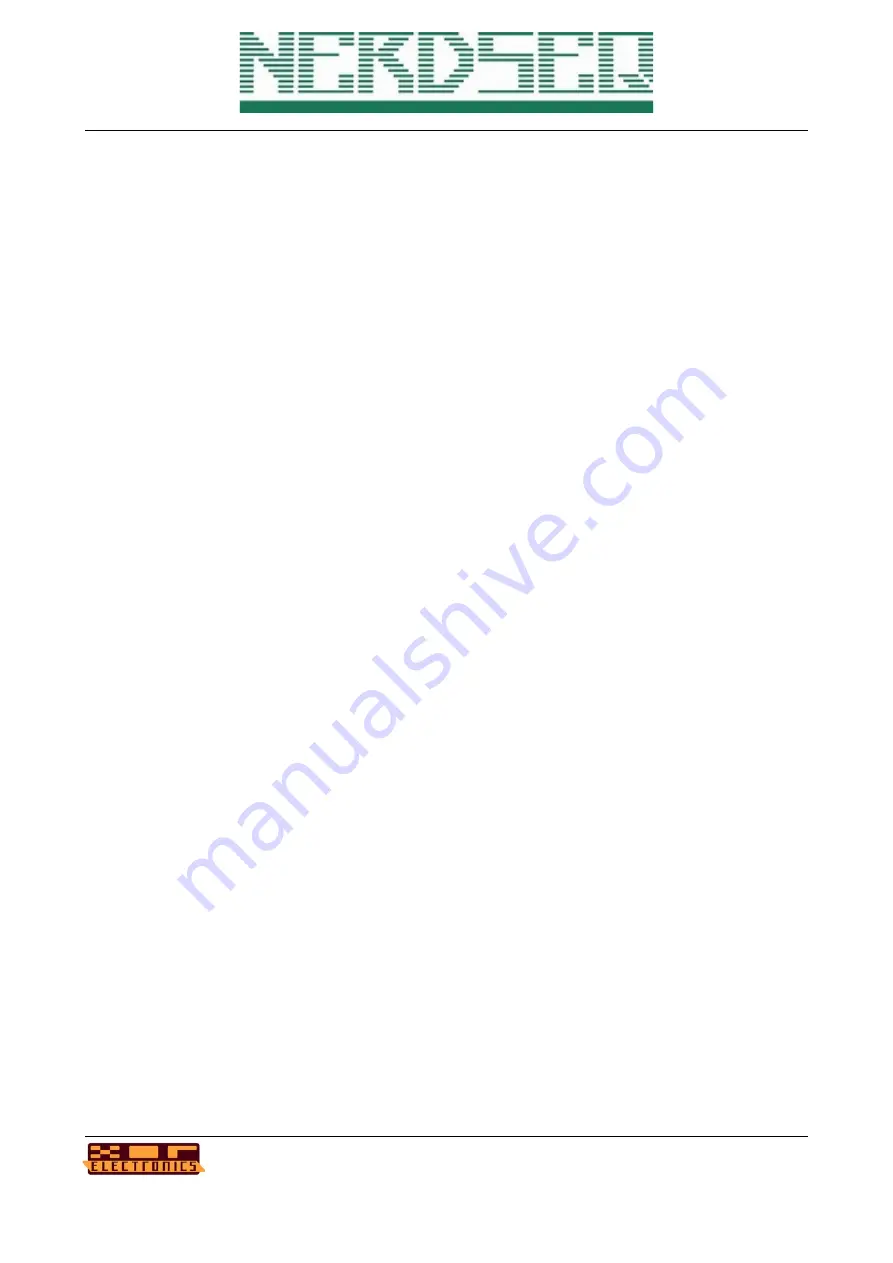
CV NOTE + GATE 1..6
→ Records CV notes + Gates into the current playing step. It fills in
a note only if a new Gate happened. This choice uses always 2 inputs, so the CV input
below the current one is automatically chosen for being the Gate input. Additionally the
Gate input detection can be delayed, so also sources which have a slew on the CV can
record well (where the CV value is not stable yet when the Gate arrives) .
The delay value can be changed below the input setting.
This is the best choice if you want to record CV + Gate from a source like a keyboard.
It can only be used on the Input settings 1,2 and 3, as it always needs 2 inputs.
CV NOTE + TRIGGER 1..6
→ Same as the
CV NOTE + GATE 1..6
except for that here
triggers are detected and recorded.
CURSOR CV
→ In combination with
CURSOR GATE
on another input. Records a note on
the current cursor position. This places a note if in the pattern screen on the Note column
if a new gate happened on the current cursor position. A Gate on (FE in the Trigger column)
is being added, too. If the Gate is released on the same step, then the Gate on is being
replaced by a trigger of 40. The cursor can be moved to another step and if the gate is
being released there, a gate off (trigger column 00) is filled in.
If holding the gate for more than 1 second on the same step, then the note and the trigger
value of the cursor will be deleted.
The sequencer doesn’t have to play or be in record mode. Edit Mode must be enabled
though for it to work.
This allows editing notes in the pattern screen from a CV/Gate keyboard.
SAMPLE PITCH 7..8
→ Selects the sample / note that should be recorded.
SAMPLE SLOT 7..8
→ Selects the sample slot that should be used for a sample note
record.
SAMPLE GATE 7..8
→ Records Notes (defined by
SAMPLE PITCH)
with the selected
Sample slot
(defined by SAMPLE SLOT)
into the current playing step. Records only if in
record mode when a pattern is playing on the selected sample track. It fills in a note only if
a new Gate happened. If no slot is selected, then the last slot is being used.
Midi Input/Record settings
→ Assign Midi Channels for live manipulation, recording and extra
functions
MIDI DATA INPUT
→ Enables / Disables the general Midi data input (not clocks). This
needs to be enabled to use the further Midi input functions.
MIDI STEP CHANNEL
→ Choose a Midi channel that is used to edit notes directly in the
pattern screen. To use it, the cursor must be on the note column of the pattern screen.
Playing a note (for example on a midi keyboard) will insert a note at the cursor position. If
the note is released on the same step as the note on, then a trigger (kill for midi tracks) is
being inserted for a short note. If the note is released on another step, then a note off is
NerdSEQ – a tracker based Eurorack sequencer
Page 111
User Manual Revision V1.26 for Firmware V1.26
12 July 2022
















































